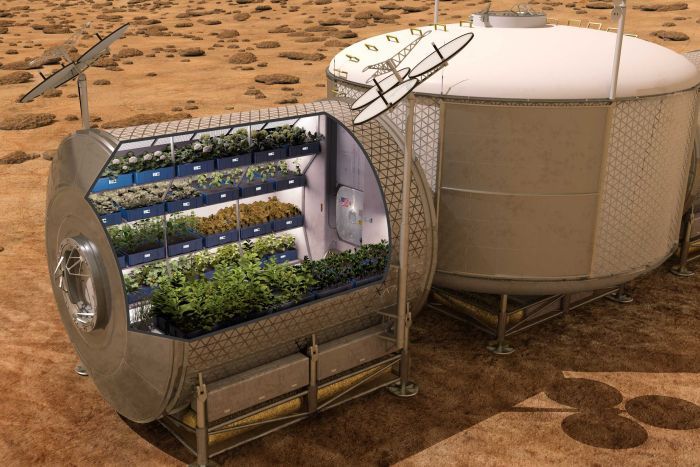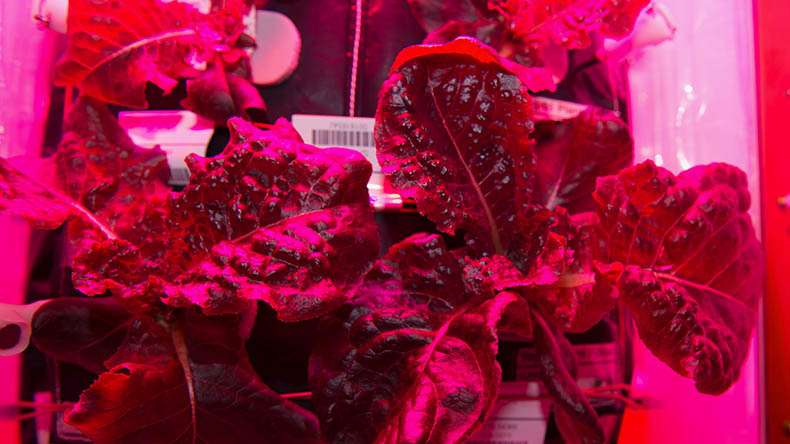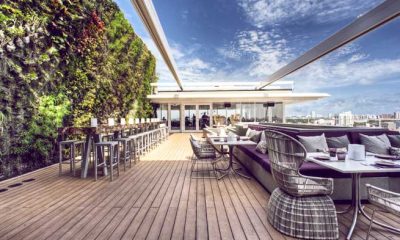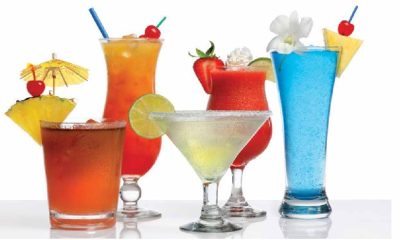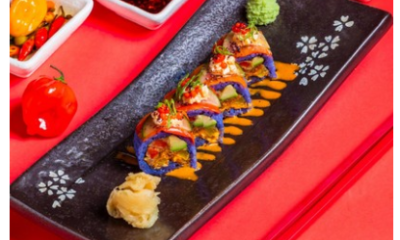Environment
Fresh On NASA’s Astronaut Menu: Space Grown Food
It’s a milestone today for NASA as astronauts aboard the International Space Station are all ready to munch on the first food grown and harvested in space—a crop of red lettuce.
Space Harvest
The leaves were harvested from NASA’s experimental plant growth system called Veg-01, a microgravity environment in which plants grow from seed “pillows” under primarily red and blue LED lights.
In 2014, an astronaut on NASA Expedition 39 grew and harvested the first plants from Veg-01 and then sent the plants back to earth for food safety analysis. This time around, the crewmembers of Expedition 44, including astronaut Scott Kelly, who is four months into a yearlong space mission, got to enjoy the bounty. Kelly activated the seed pillows on July 8, and then tended to the plants for 33 days before harvesting.
Previously Planted Experiments
While this isn’t NASA’s first experiment designed to test the growth of plants in controlled environment agriculture settings – scientists previously designed a habitation to grow plants on the moon – this is the first and only experiment to evaluate the effect of plant life on humans in space.
Eat Some. Save Some.
The astronauts will eat half of their lettuce crop, setting aside the rest to be packaged and frozen for analysis. They also have a batch of zinnias to grow, which will also be used to study how flowering plants can grow and pollinate with little gravity.
Though some fresh foods are already on the menu at the International Space Station, a NASA scientist says crew members must wait for shipments of foods like apples and carrots, and then consume it quickly. The ability to grow sustainable plants in space opens up a world of possibilities for prolonged space exploration, both in terms of improved nutrition and beyond.
Why Do They Need Fresh Food?
Not only do fresh vegetables contain vital vitamins and nutrients, NASA says there are likely psychological benefits from caring for a small piece of green, which will be increasingly important as space voyages become longer. This idea is central to NASA’s Journey To Mars project, which aims to send humans to Mars in the 2030s.
Being able to replenish food sources during much longer voyages would be essential for future space travelers, not only for nutritional needs but also to give astronauts something to do. It also gives crew members a living mark to remind them of Earth.
“The farther and longer humans go away from Earth, the greater the need to be able to grow plants for food, atmosphere recycling and psychological benefits,” said Gioia Massa, a scientist from Kennedy, in a statement. “I think that plant systems will become important components of any long-duration exploration scenario.”

